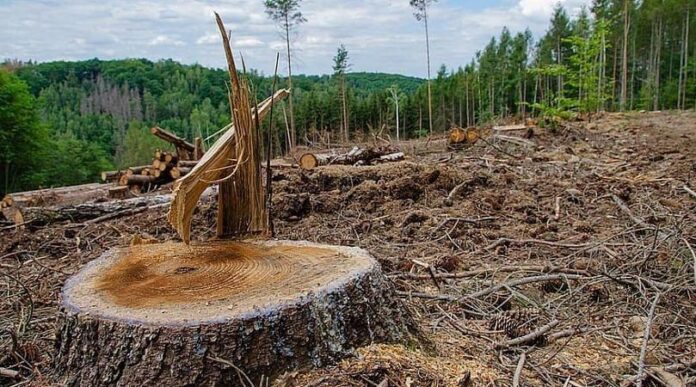AGARTALA:
Massive deforestation and an increase in rubber plantations in Tripura’s Sepahijala has caused a major change in the habitat of non-human primates escalating incidents of monkey-human conflict in the district.
This was revealed in a research paper titled, Public opinion regarding human-monkey conflict and conservation of non-human primate in Sepahijala district of Tripura – compiled by research scholars Prasenjit Patari and Sabyasachi Dasgupta, Department of Forestry and Biodiversity, Tripura University, released in January 2022.
Both the scholars conducted a questionnaire survey in six villages of the Sepahijala district from January 2021 to April 2021 and a significant number of respondents claimed that Macaca Mulatta, Trachypithecus Phayrei and Trachypithecus Pileatus species of monkeys are the ones that are causing the maximum damages to their crops, devouring various fruiting plants throughout the year.
The survey was conducted mainly in Sepahijala Wildlife Sanctuary, Ashabari and Kathalia forest areas and nearby rubber plantations. As rubber plantation is economically beneficial to the indigenous tribal communities, majority of the people in the areas shunned cultivating other crops and started rubber plantation. As a result, non-human primates are now reeling under scarcity of food, shelter and safety.
During the survey, all the respondents also reported that three species of monkeys – Rhesus macaque, Capped langur and Phayre’s leaf Monkey – too are causing them problems owing to a change in their habitat due to the shift in farming patterns.
“Rhesus macaque, Capped langur and Phayre’s leaf Monkey are the main species of monkey that are found in this region and across Tripura”, said Patari.
“Utmost number of respondents nearby the rubber plantation and reserve forest areas claimed that due to an increase in rubber plantation (56.66 per cent), monkeys and langurs are shifting from one location to another. Respondents living near the wildlife sanctuary area (26.66 per cent) observed that some unscrupulous peoples are felling trees causing a scarcity of food and shelter among the primates. This resulted in the shrinkage of primate habitats. Around 75 per cent peoples nearby reserve forest area provided same data. Around 8 to 10 per cent respondents reported that primates like to feed on homegrown vegetables and that’s why are entering households and damaging crops,” the study revealed.
On mitigating measures, the study has said, “Majority of the respondents proposed a primate park in the area. The primates have an aesthetic value as they resemble humans. This will create employment opportunities for the rural masses, as well”.
Moreover, some of the respondents also urged the state government to initiate plantation of fruit trees near the roads to divert the attention of the monkeys.


